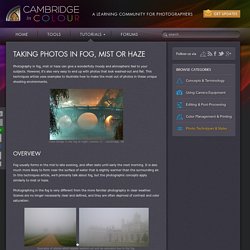

MCP Photoshop Actions and Tutorials Blog for Photographers. September 01, 2009 | 6 Comments |Add a comment As photographers there are times where we want blurred background and beautiful background separation.

But other times stopping speed is our primary concern. We may want to freeze motion of a car, a plane, a bird, an athlete at a sporting event, or even with snapshots of our own kids running, jumping, diving, etc… If you have been shooting for years, you may already know all of this. If that is the case, I would love you to add comments with more ideas on the subject. Settings for the above shots: ISO 100, Speed 1/500-1/1250, Aperture f/4.0-5.6 – using Tamron 28-300mm lens (manual with no flash) Cycling Photography Tips. Zoom in Many times cycling events occur at velodromes (indoor cycling tracks), where you’ll want to use a long telephoto zoom lens to isolate and capture the action from either up close or the far end of the track; use a 300mm lens to compress the background and focus in on a single cyclist or a small pack.

Due to the long focal length of the lens and the speeds of the cyclists, you’re better off setting the lens to continuous focus (AI Servo AF Canon/AF-C Nikon) mode. This way the camera will continue to focus as the subject – the cyclist – keeps moving forward. Focus on the Face An effective technique in sports photography is to capture the struggle the athlete is having to overcome during the contest, and that struggle is best illustrated in the face of the athlete.
A “Mist” shot - Better Fog Photography. How-To Monday, January 3, 2011 By Russ Burden Some people associate fog with inclement weather and avoid the outdoors.

Not me. I grab my camera to create some extremely exciting images. As compositional elements recede from the camera position, so does the intensity of their shape, color, and contrast. How to Take Photos in Fog, Mist or Haze. Photography in fog, mist or haze can give a wonderfully moody and atmospheric feel to your subjects.

However, it's also very easy to end up with photos that look washed-out and flat. This techniques article uses examples to illustrate how to make the most out of photos in these unique shooting environments. Clare Bridge in the fog at night (version 1) - Cambridge, UK Fog usually forms in the mid to late evening, and often lasts until early the next morning. It is also much more likely to form near the surface of water that is slightly warmer than the surrounding air. Photographing in the fog is very different from the more familiar photography in clear weather. Examples of photos which appear washed-out and de-saturated due to the fog.Both photos are from St John's College, Cambridge, UK.
In essence, fog is a natural soft box: it scatters light sources so that their light originates from a much broader area. Photographing in Fog. What Works in Black & White. 44 essential digital camera tips and tricks. Our collection of top digital camera tips and essential photography advice will have you improving your photos in no time.

Culled from experts and photographers who have been taking pictures for quite some time, they all agree that these 44 camera tips are essential knowledge for honing your craft. So feast your eyes below, check out some of our best photography tips on everything from setting up your digital camera to honing your photo composition, and by the end you will learn the secrets and shortcuts to getting high-quality pictures every time.
Digital Camera Tips: 01 Always reset camera settings. 49 seriously good Canon DSLR tips, tricks, time savers and shortcuts. To help you get to the grips with your EOS camera and all the great technology therein, we’ve put together 49 essential Canon DSLR tips and tricks specifically for getting more efficient use from your Canon EOS camera.

From basic stuff, like how to shoot in raw format, through to advanced shortcuts aimed at pros, you’ll find everything you need to take better shots faster, which was the whole point of buying a Canon DSLR in the first place… JUMP TO: Canon EOS 5DS / 5DS R review Cradle your Canon camera in your hand, and you have at your fingertips an incredibly sophisticated tool. Whatever EOS camera model you own, your DSLR is a finely tuned instrument, which combines both precision-engineered mechanical controls and computer-guided high-tech electronics – all designed to help you get great pictures whatever the situation. Many Canon owners never do much more than scratch the surface of their camera’s capabilities.
Focusing Tips & Tools. 5 Black and White Photography Tips. A Post By: Darren Rowse Continuing the Black and White Photography theme we’ve been on lately in the latest forum assignment (where the photos featured in this post were submitted) I thought I’d share five pretty random Black and White Photography Tips. 1.

Shoot in RAW I know many readers of DPS can’t shoot in RAW (because their camera doesn’t offer it) or don’t shoot in RAW (because they either don’t know how or don’t like to) but for the most control in the post production phase of converting your color images into black and white ones – you’ll want to shoot in RAW if your camera does allow it. F-Stop. Understanding metering, part one: introduction. One of the more important – yet almost always overlooked – aspects of camera operation is metering.
Simply put, the meter determines what your final exposure is, and how bright or dark your image looks relative to the scene. Unless you are shooting manual – and even then – the camera’s exposure is determined by the meter. Add the fact that the eyes of a viewer tend to go to the brightest and/ or highest contrast portions of an image first (i.e. this should be your subject) – and it’s clear to see why it’s absolutely critical to understand both how metering works as a fundamental concept and any camera-specific peccadilloes that might exist.
99 Common Photography Problems (and how to solve them) As well as being one of the most expensive hobbies around, photography is also one of the more technical pastimes you can pursue.

But it doesn’t have to be confusing! We’ve spoken to numerous experts over the years, as well as photographers like you, who may either be just starting out or have been taking pictures for a while but keep encountering the same nagging problem. From all our conversations, we’ve noticed some common photography problems that seem to plague snappers of all ages and abilities. Aperture and Depth of Field. Depth of Field Depth of Field (DOF) is the front-to-back zone of a photograph in which the image is razor sharp.

As soon as an object (person, thing) falls out of this range, it begins to lose focus at an accelerating degree the farther out of the zone it falls; e.g. closer to the lens or deeper into the background. With any DOF zone, there is a Point of Optimum focus in which the object is most sharp. Achieving Better Focus and Sharpness in Your Images. Twice a month we revisit some of our reader favorite posts from throughout the history of Phototuts+.

This tutorial was first published in October, 2009. The most common complaints I hear from most photographers of any experience level is "my images aren't sharp", and "I can't get my focus to lock". Most want to blame their equipment and, while there are many instances that equipment is to blame, I have found a vast majority are just simple user error. This is often down to a lack of understanding of how an autofocus (AF) system works. This tutorial will give you a better understanding of focus and sharpness, and hopefully help you take photographs that you're very happy with!
Jargon Buster - Photography. If you're a complete novice when it comes to photography, but have a burning passion to learn and have no place to turn to when you're bombarded with jargon, we've got something for you. Here's a list of the most commonly used photography jargon simplified, so that anyone with even the most basic knowledge can understand them. ArtifactsArtifacts are unwanted aberrations caused by sensor, optics or internal image processing algorithms of a camera. The most common artifacts are blooming, maze artifacts, chromatic aberrations, moire, jaggies, JPEG compression, noise, and sharpening halos.AliasingEver wondered why diagonal lines appear jagged rather than straight or smooth in some images?
This is because of aliasing, which happens due to the square nature of pixels – the minutest component that any picture is made of. Aperture / f-stopWhen you click a photograph, the lens opens to certain degree so that light can pass through it and onto the camera's sensors or film. Digital Photography Tips: Digital Photography School. 27 Excellent Digital Photography Tutorials. To improve and modify digital photographs is very interesting and a fun part. Lots of digital photography techniques and tutorials are available on internet, you can create same digital effect in different ways. The best technique to create effect is which take less steps. In this post i have listed 27 excellent digital photography tutorials to help you create different effects and manipulate your digital photographs. I hope you will enjoy these tutorials and don’t forget to mention the tutorial which was an add on in your experience. 1.
In this tutorial designer will show you how to create a post apocalyptic manipulation using adjustment layers, vector masks, and some special effects. 2. This tutorial uses a different method than either of CMYK curves adjustment layers. 3.